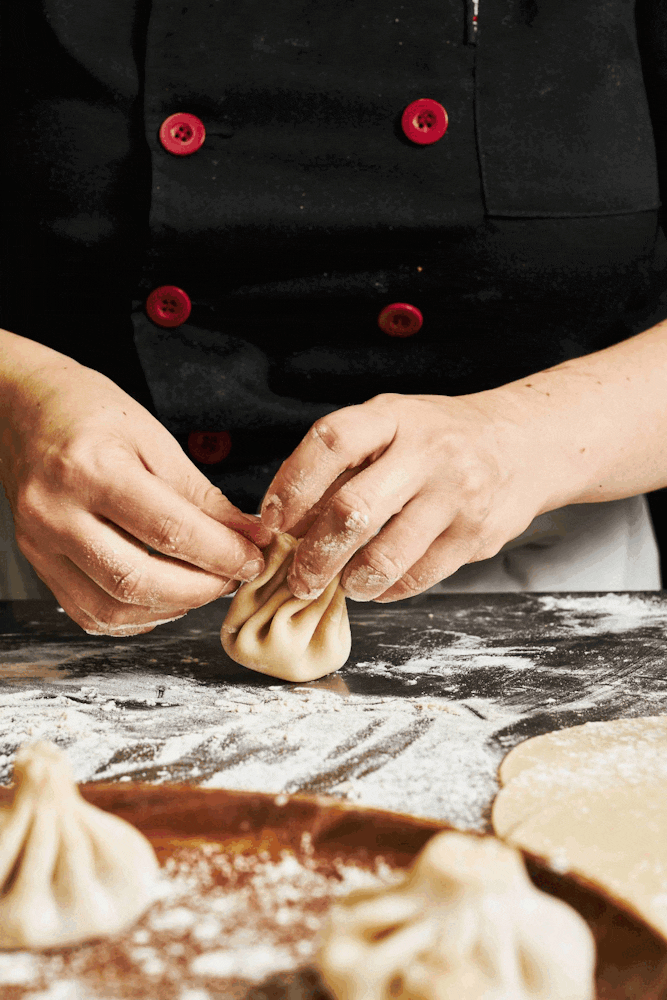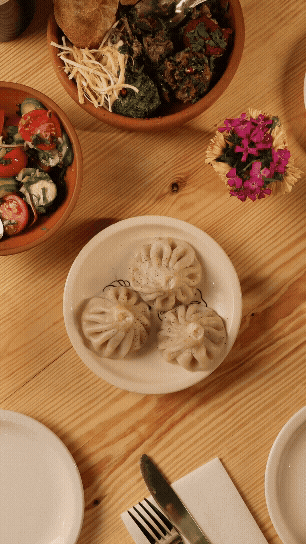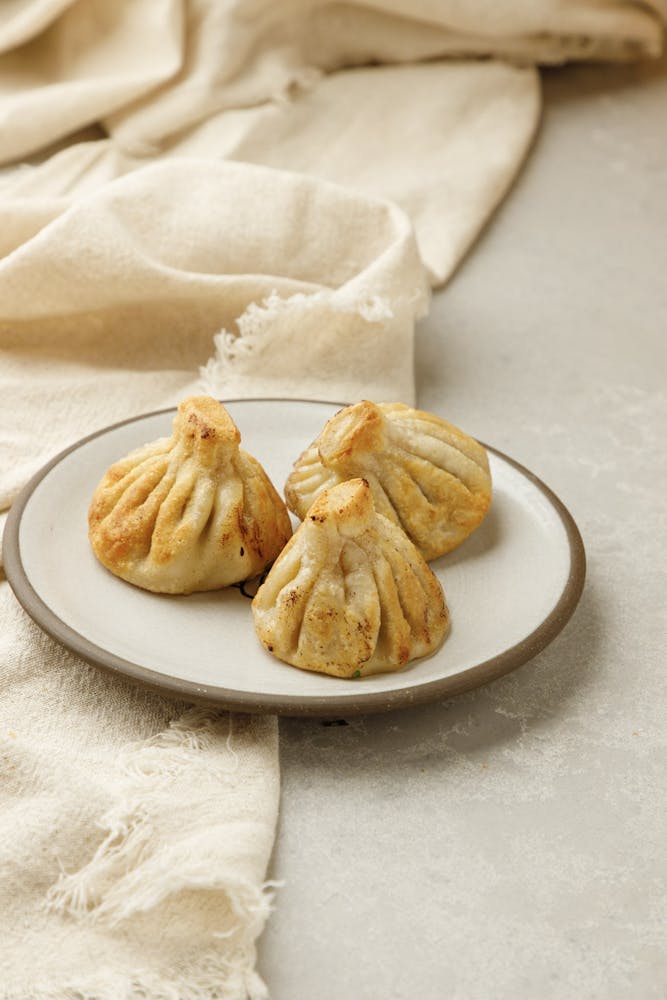How to Make Authentic Khinkali – A Traditional Georgian Recipe
There’s something undeniably special about stepping into a cozy kitchen on a crisp afternoon — the kind where the air is thick with the comforting aromas of freshly kneaded dough and the earthy, inviting scent of spices. It’s a feeling that speaks not just to the stomach, but to the soul. Rooted in the heart of Georgian tradition, Khinkali are far more than dumplings — they are a celebration in every fold. Handcrafted with care, each tender pouch is filled with spiced meat and a burst of savory broth, ready to be savored slowly, joyfully, and always in good company.
At Chama Mama, we believe that Khinkali are best enjoyed the way they have been for generations — gathered around a table crowded with platters of these steaming dumplings, laughter echoing through the air. In Georgia, it becomes a playful ritual: who will master the graceful art of eating without losing a single drop of broth?
But the real game lies in the kuchi — those little twisted knobs of dough pinched at the crown of each Khinkali. Traditionally, Georgians leave these tops uneaten, neatly collecting them along the edge of their plates. As the feast unfolds, eyes begin to wander from plate to plate, smiles widen, and a familiar anticipation builds: Whose plate will be crowned with the most kuchi?
in the playful competition between friends and family, as numbers are tallied and champions are crowned — not with medals, but with hearty laughs and another round of toasts.
 | What is Khinkali?There’s something undeniably special about the way a single bite can transport you — and for many, that magic begins with Khinkali. Rooted in the misty mountains of Georgia, Khinkali are not just dumplings; they are little parcels of tradition, love, and centuries-old hospitality. Each is hand-folded with care, its delicate pleats encasing a symphony of spiced meat and a whisper of savory broth, crafted to nourish both body and soul. At Chama Mama, we honor the ancient art of Khinkali-making just as it’s been cherished for generations. From the robust, hearty flavors of the highlands to the herb-kissed variations of the lowlands, every region of Georgia lends its own soul to this beloved dish. Yet no matter the filling, it is the spirit behind the fold — the reverence for guests, the celebration of gathering — that remains constant. The magic of handmade Khinkali lies in the details: the tender resilience of the dough, the burst of warm broth at first bite, the graceful, intricate pleats that seal in not just flavor, but memory. To craft Khinkali is to tell a story — one of home, heart, and the timeless Georgian belief that “A guest is a gift from God. . |
Ingredients for the Perfect Khinkali
Making Khinkali from scratch is a rewarding experience, and the key to success lies in using the right ingredients. The dough must be soft yet sturdy enough to hold the flavorful filling, and the filling itself should be well-seasoned and juicy. Achieving the right texture and balance is what sets authentic Khinkali apart from other dumplings. Below, you’ll find everything you need to create Khinkali just like we do at Chama Mama.
- 3 ½ cups all-purpose flour
- 1 cup warm water
- 1 teaspoon salt
- 1 egg (optional, for a firmer texture)
- 1 pound ground beef and pork mix (or just beef)
- 1 medium onion, finely chopped
- 2 cloves garlic, minced
- 1 teaspoon ground black pepper
- 1 teaspoon ground coriander
- 1 teaspoon salt
- ½ cup water or beef broth (to keep the filling juicy)
Tips for the Perfect Khinkali
Step-by-Step Guide to Making Khinkali
Mastering the art of Khinkali requires patience and precision, but the effort is worth it. Whether you are making them for the first time or refining your technique, these steps will help you achieve perfect dumplings every time.

How to Eat Khinkali the Traditional WayThere’s a quiet excitement when a steaming platter of khinkali arrives at the table. honor the tradition, begin by cradling the dumpling gently by its twisted topknot — the kudi. There's no need for a fork or knife; this is a dish best savored with your hands, connecting you directly to centuries of Georgian culinary artistry. Bring the khinkali close and take a small bite near the base, just enough to sip the rich, fragrant broth hidden inside. This first taste is pure comfort: warm, hearty, and utterly soul-soothing. Once you’ve savored the broth, continue with tender bites, working your way around the dumpling until only the kudi remains. Traditionally, the kudi is set aside on the plate — a simple nod to the craftsmanship behind each fold. To honor the tradition, begin by cradling the dumpling gently by its twisted topknot — the kudi. There's no need for a fork or knife; this is a dish best savored with your hands, connecting you directly to centuries of Georgian culinary artistry. At Chama Mama, we invite you to savor khinkali the way generations have before — with your hands, with your heart, and always with good company. |  |
Experience Authentic Khinkali at Chama MamaRooted in the rich traditions of Georgian hospitality, Chama Mama invites guests to savor the timeless art of Khinkali — each one hand-folded with care, crafted to honor generations of shared tables and heartfelt connection. Our menu celebrates both tradition and creativity, offering tender lamb Khinkali, a robust beef and pork blend, and a vibrant mushroom vegan option — each brimming with flavor and soul. For those seeking an extra layer of indulgence, our pan-fried Khinkali deliver a golden, delicate crispness that crackles with every bite. Served warm and with a smile, every Khinkali at Chama Mama is more than a dish — it’s a memory, a celebration, a feeling of home waiting to be discovered. Because at Chama Mama, we believe food is a celebration — of heritage, of connection, of love. Every Khinkali we craft carries the memory of kitchens past and the promise of tables gathered around laughter and light. Folded by hand, served with intention, shared with joy — this is not just food. This is home. |  |
FAQ
Special Invitation: Order online and use promo code KHINKALI at checkout — enjoy a FREE order of Khinkali with your meal. Because good things are meant to be shared.
